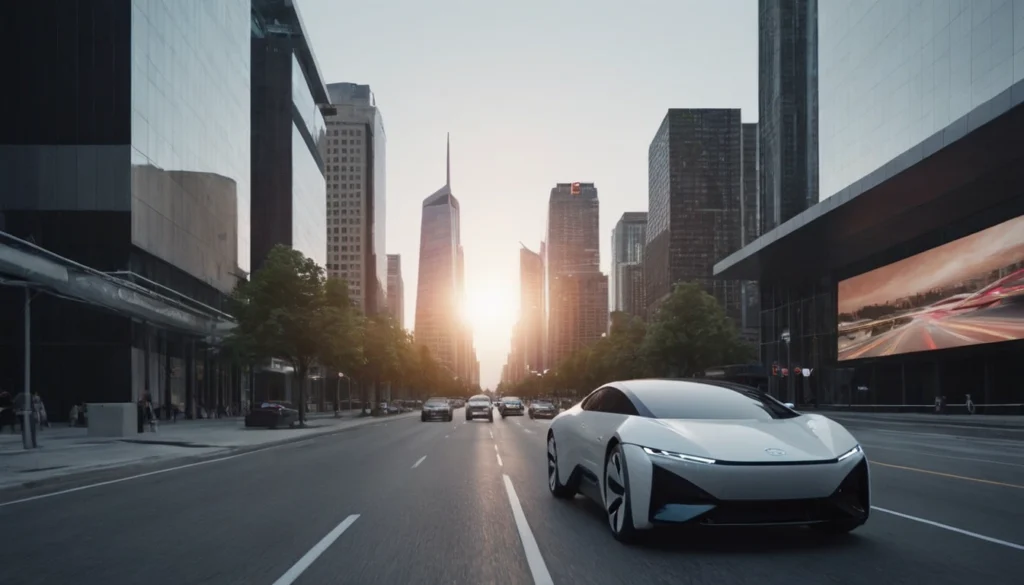With Tesla announcing significant job cuts, what implications might this have for innovation and market dynamics in the automotive sector?

In an unexpected move that has stirred the auto industry, Tesla, the trailblazer in electric vehicles, has declared a reduction of over 10 percent of its global workforce. This decision, communicated through a memo from CEO Elon Musk, highlights a strategic pivot aimed at streamlining operations amidst challenging economic times. As Tesla braces for a transformative phase, this blog explores the deeper ramifications of such layoffs on Tesla’s innovation trajectory and the broader automotive landscape, emphasizing how strategic workforce adjustments are a crucial aspect of maintaining competitiveness in a tech-driven market.
The Context Behind Tesla’s Decision
Tesla’s announcement is not merely about job cuts; it is a reflection of a broader strategic overhaul. In the words of Elon Musk, this move is about eliminating “duplication of roles and job functions in certain areas,” a byproduct of rapid expansion. This decision underscores a critical aspect of corporate management in technology-intensive industries: the need for agility and efficiency.

Over the past decade, Tesla has undergone explosive growth, becoming synonymous with electric vehicles (EVs). However, this growth has not come without its challenges. Recently, the company faced its first year-over-year drop in vehicle deliveries since 2020, a decline of 8.5 percent in the first quarter. This dip has been attributed to multiple factors, including supply chain disruptions and geopolitical tensions that impacted shipping routes and production capabilities.
Impact on Innovation and Market Leadership
Strategic layoffs, though painful, can serve as a catalyst for innovation. For Tesla, reducing its workforce is part of a broader effort to enhance productivity and cost-efficiency, critical factors as the company prepares for its next growth phase. This restructuring is intended to make the company “lean, innovative, and hungry for the next growth phase cycle,” in Musk’s words.
The layoffs could potentially accelerate Tesla’s ongoing projects in revolutionary technologies across auto, energy, and artificial intelligence sectors. For instance, the consolidation of talent and resources might enable more focused research and development efforts, thus speeding up the innovation cycle. Moreover, a leaner workforce can lead to more agile decision-making processes, crucial for Tesla as it continues to lead in the highly competitive and fast-evolving EV market.
Navigating the Challenges of Digitalisation and Automation
The automotive industry is at a crossroads, heavily influenced by digitalisation and automation. Efficient document management systems (DMS) and electronic content management (ECM) systems are pivotal in managing the vast amounts of data generated by modern automotive companies. For companies like Tesla, embracing advanced AI-driven DMS solutions such as PaperOffice can be instrumental in enhancing operational efficiency by automating routine tasks and organizing documentation effectively. This not only reduces overhead but also allows companies to focus more on core innovation areas.
The Role of AI-Driven Processes in Automotive Advancements
AI-driven processes are becoming increasingly integral to the automotive industry. From autonomous driving systems to predictive maintenance and personalized customer experiences, AI is at the forefront of the automotive evolution. Tesla has been a pioneer in integrating AI into its vehicles, significantly enhancing the driving experience and vehicle safety through advanced driver-assistance systems (ADAS).
Moreover, Tesla’s approach to AI extends beyond vehicles to its manufacturing processes. The company has been a leader in adopting smart factory solutions, using AI to optimize everything from inventory management to production lines. This holistic adoption of AI not only enhances efficiency but also drives down costs, enabling Tesla to maintain its price competitiveness.
Future Outlook and Industry Implications
As Tesla restructures its workforce, the implications extend beyond the company to the entire auto industry. Other players in the market may see this as a cue to reassess their own operational strategies, particularly in how they incorporate AI and automation in their processes. Tesla’s move might also trigger a wave of innovation, as companies strive to stay competitive by enhancing their technological capabilities.
Conclusion

Tesla’s recent layoffs reflect a strategic shift that is likely to influence not just its future but also the dynamics of the entire automotive industry. By focusing on streamlining operations and harnessing the power of AI, Tesla is not just preparing to survive current economic challenges but is also paving the way for the next era of automotive innovation. As companies across the spectrum adapt to this changing landscape, the integration of advanced technologies and strategic management of human resources will become increasingly important in defining market leadership.
This pivotal moment for Tesla serves as a reminder of the critical balance between workforce management and technological advancement in driving corporate success in the era of digital transformation. The company’s ability to navigate these changes will be closely watched by industry observers and competitors alike, as it signals broader trends that could define the future of mobility.






Leave a Review